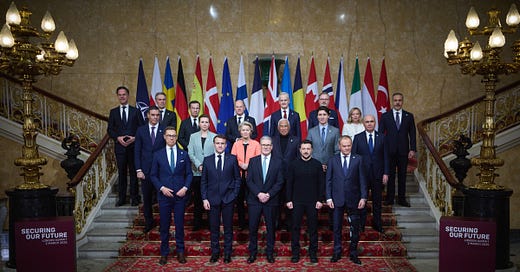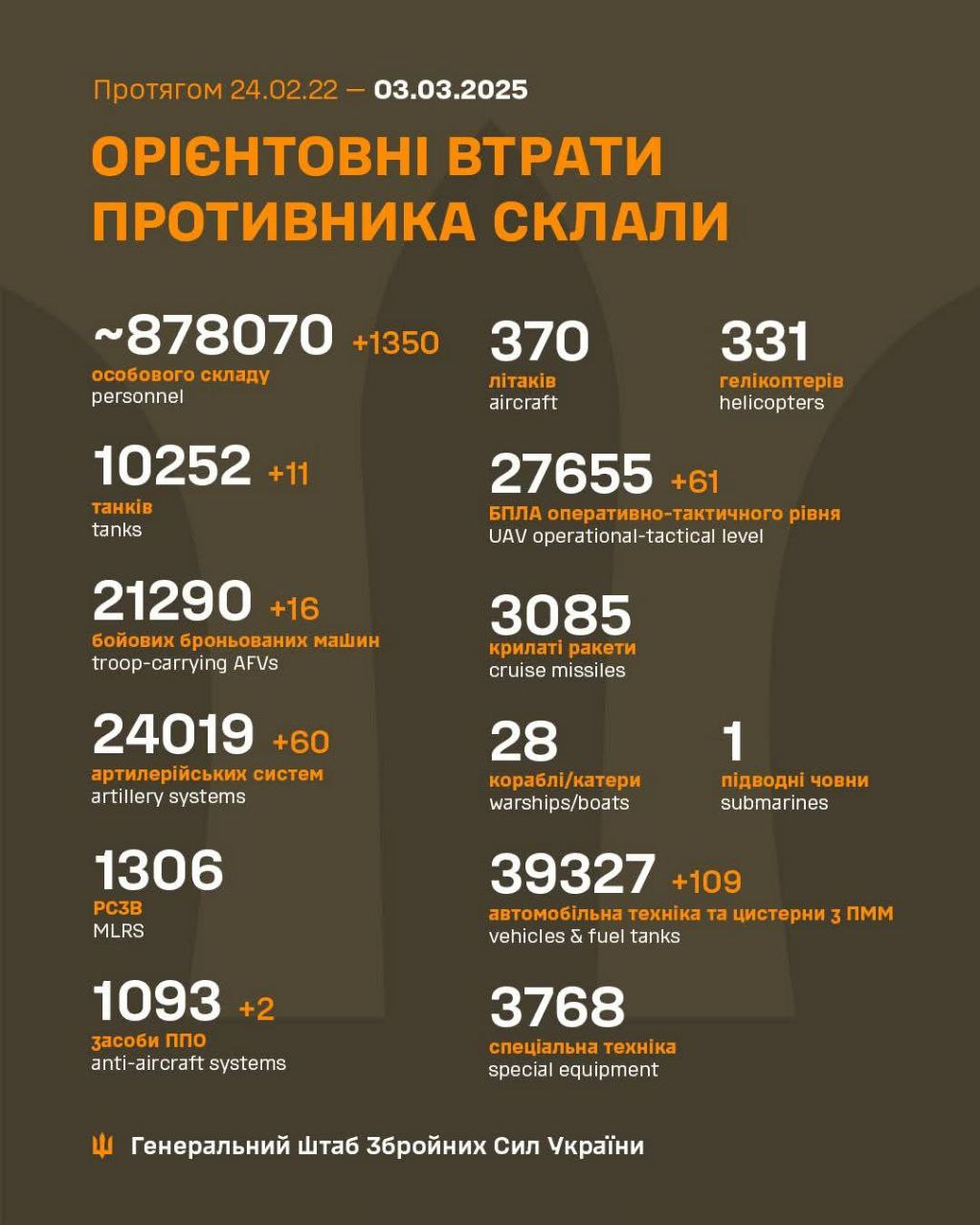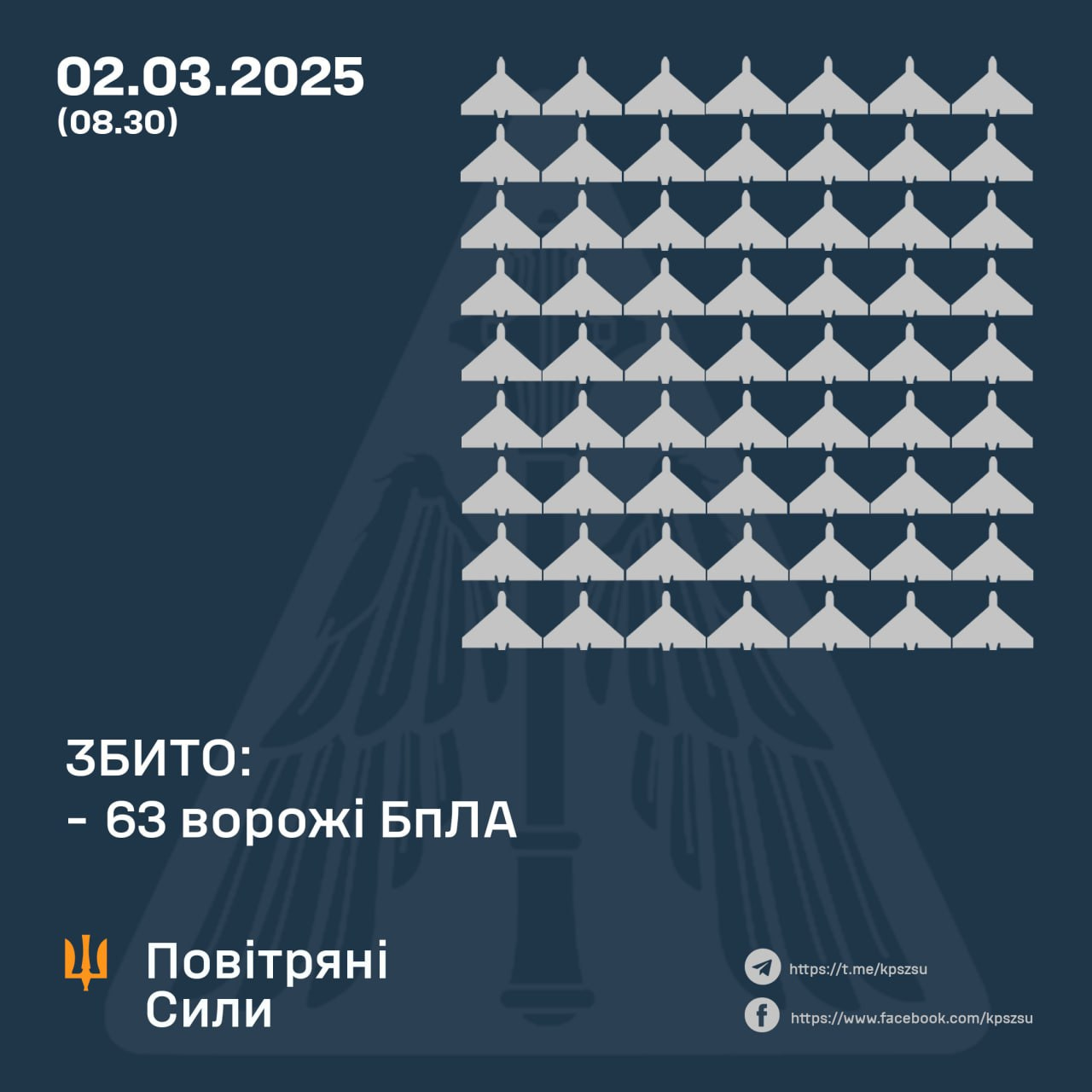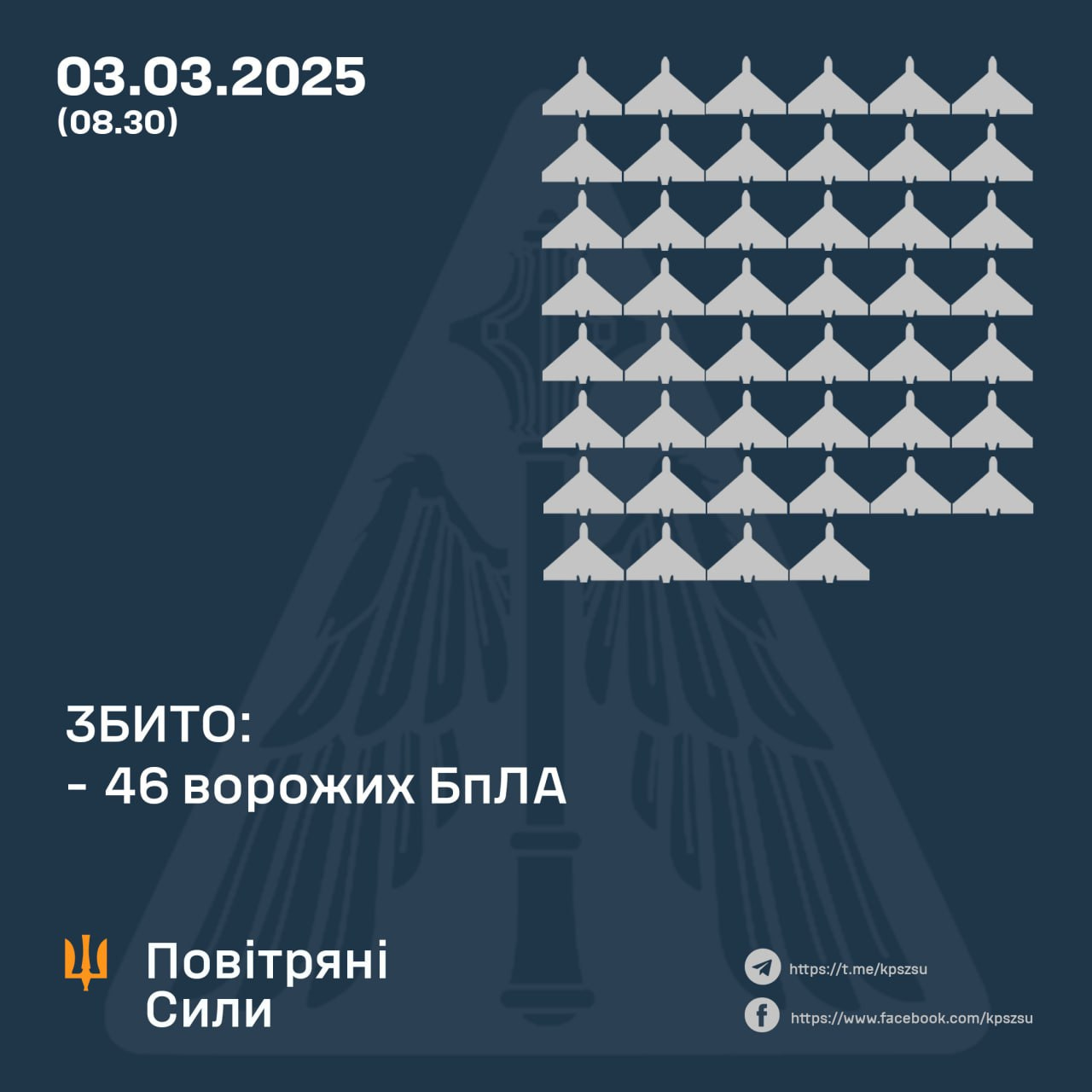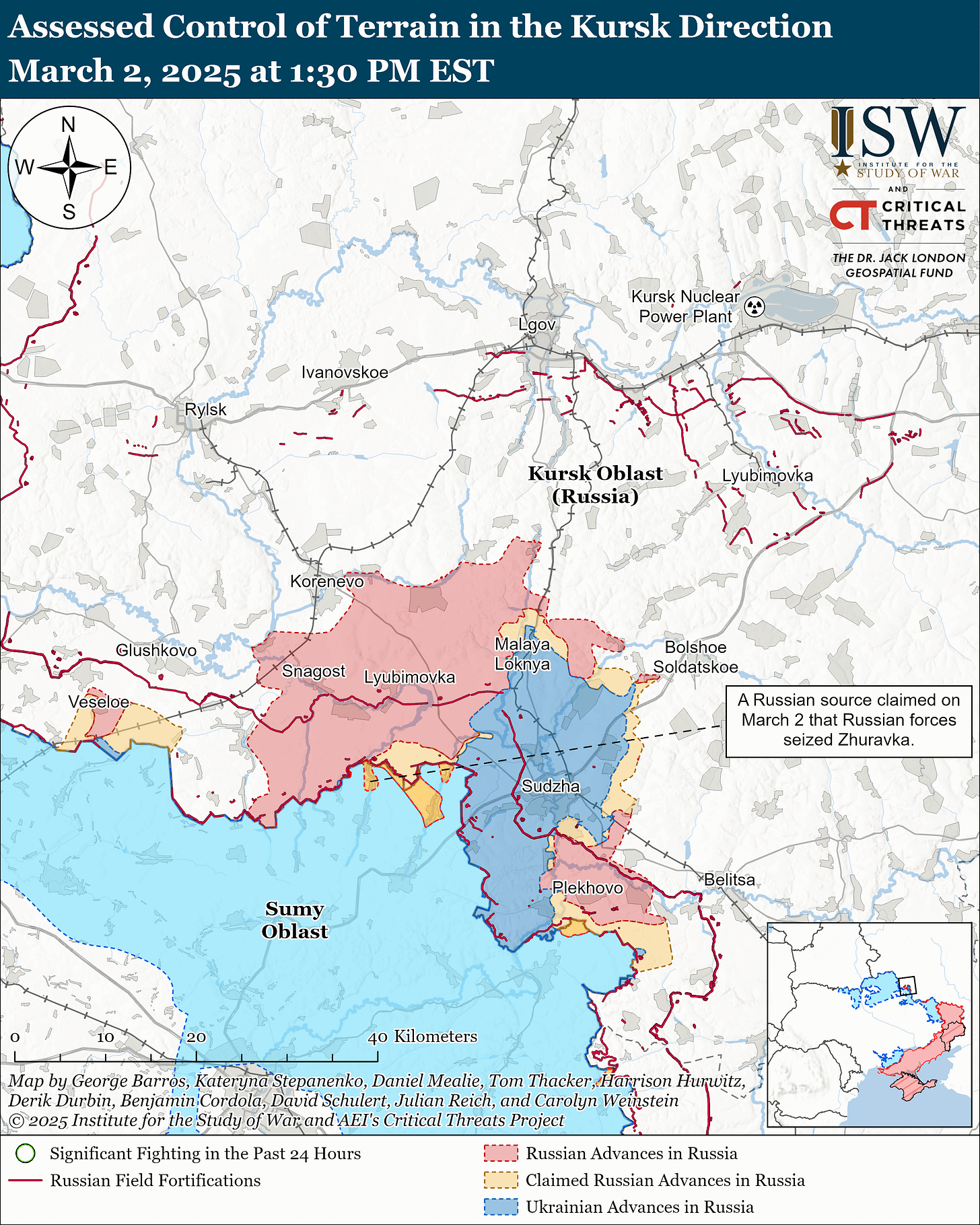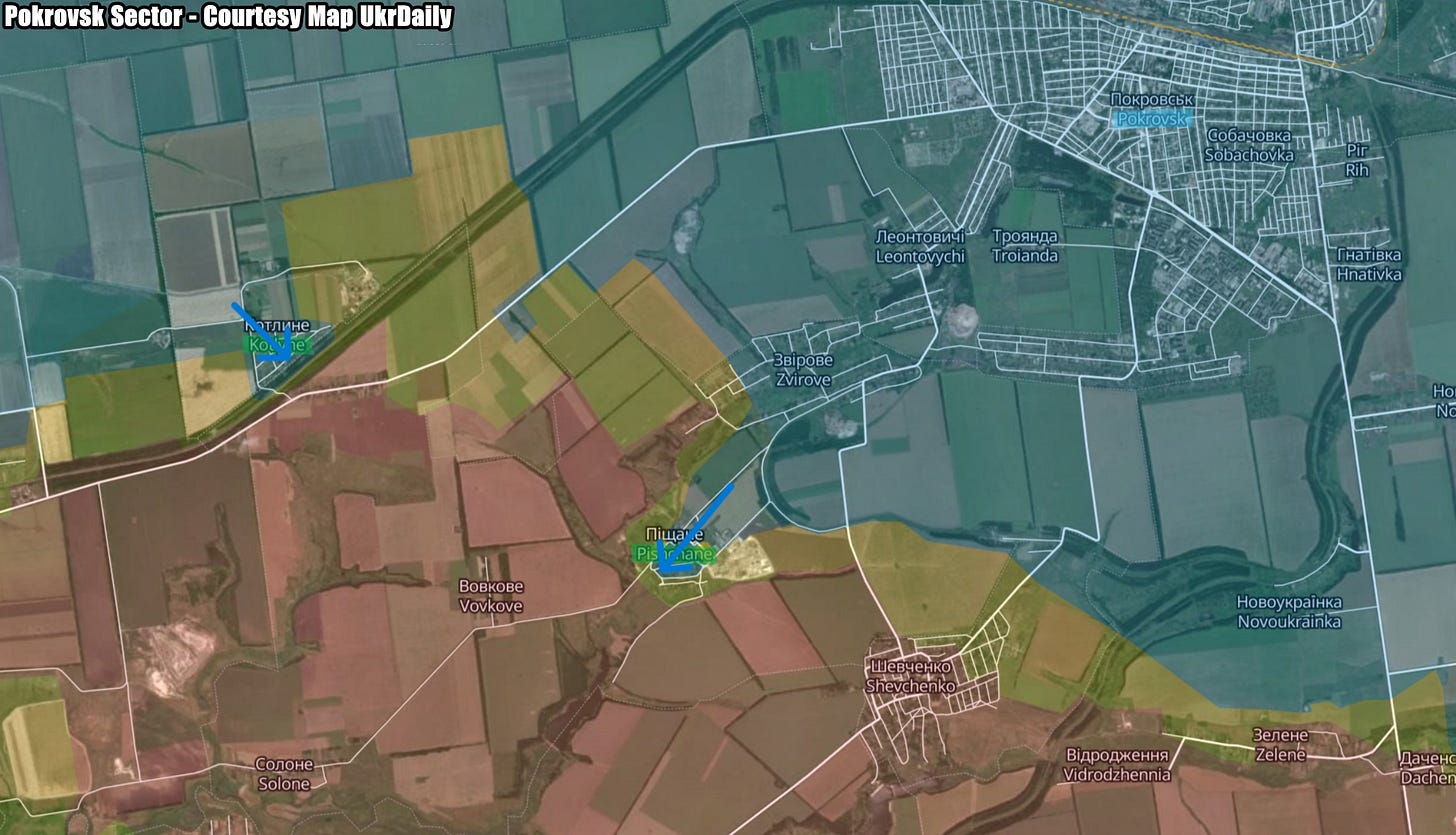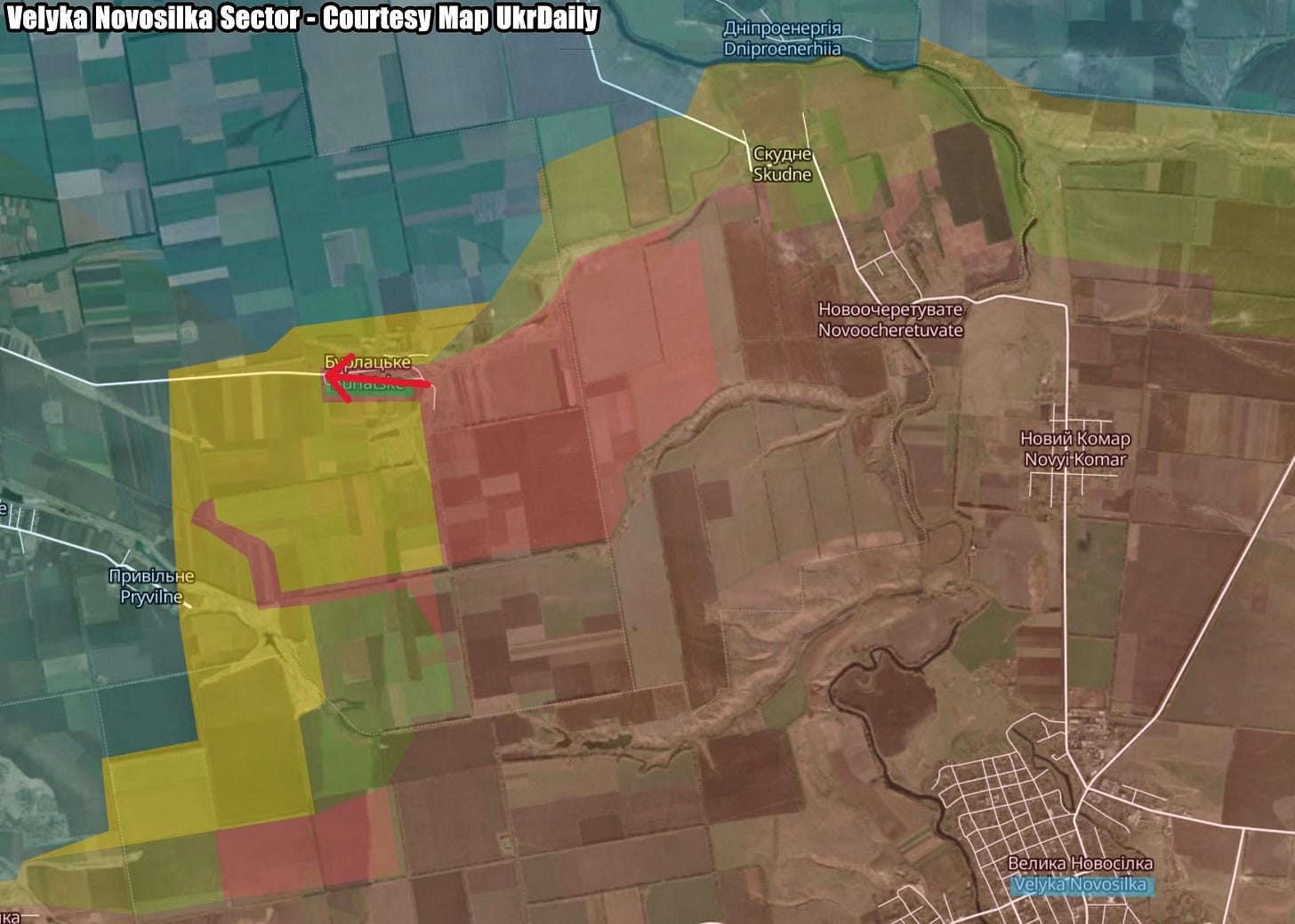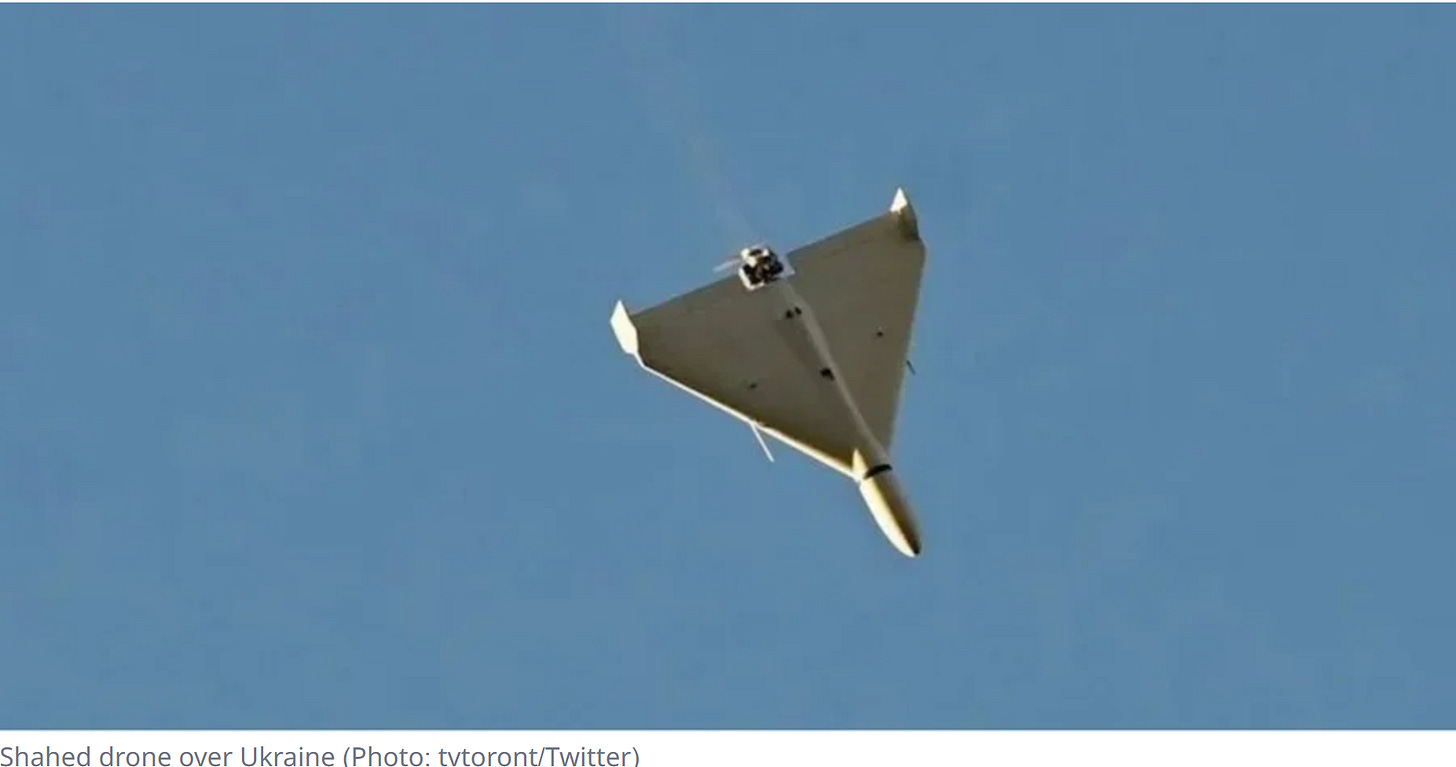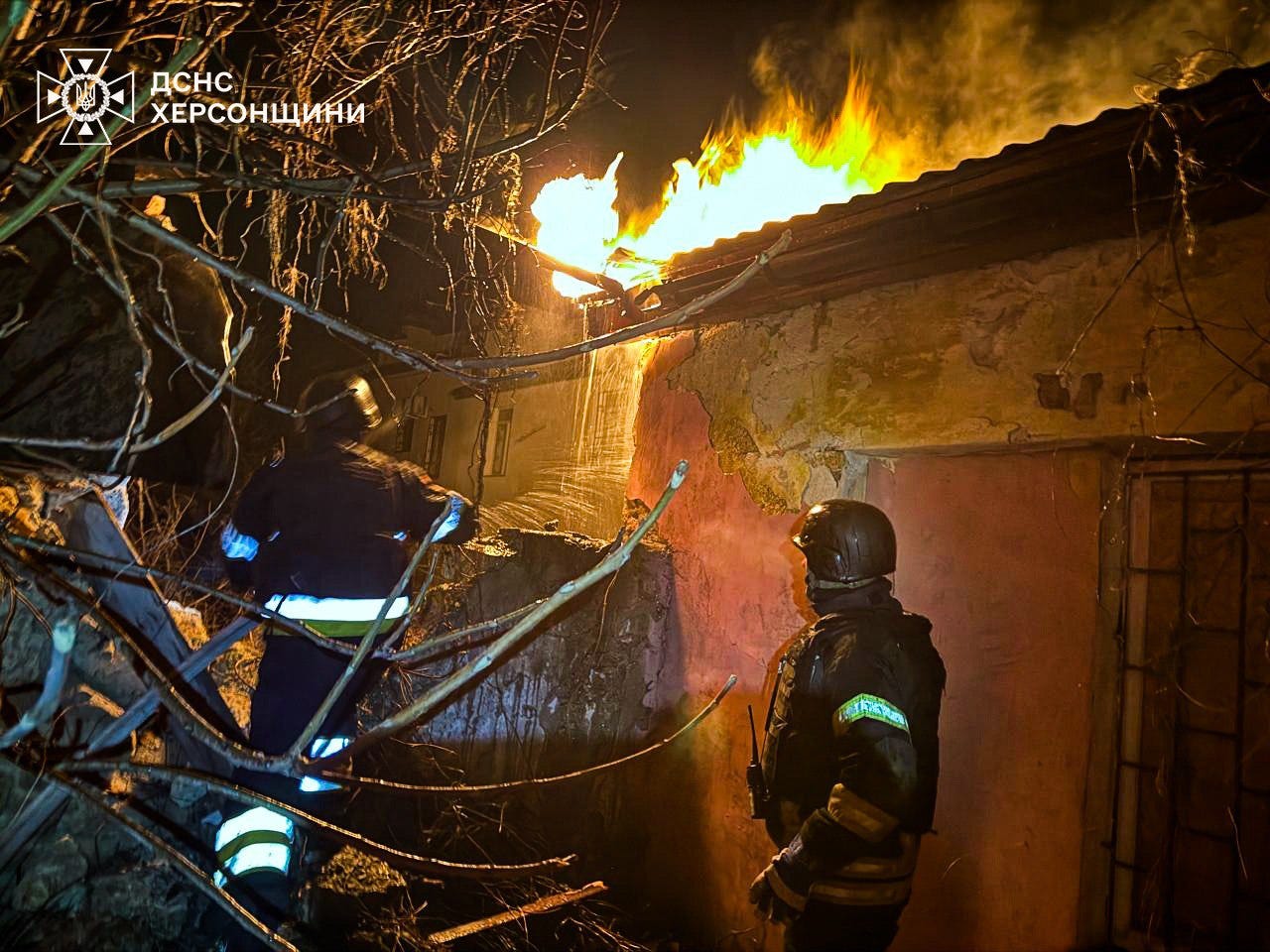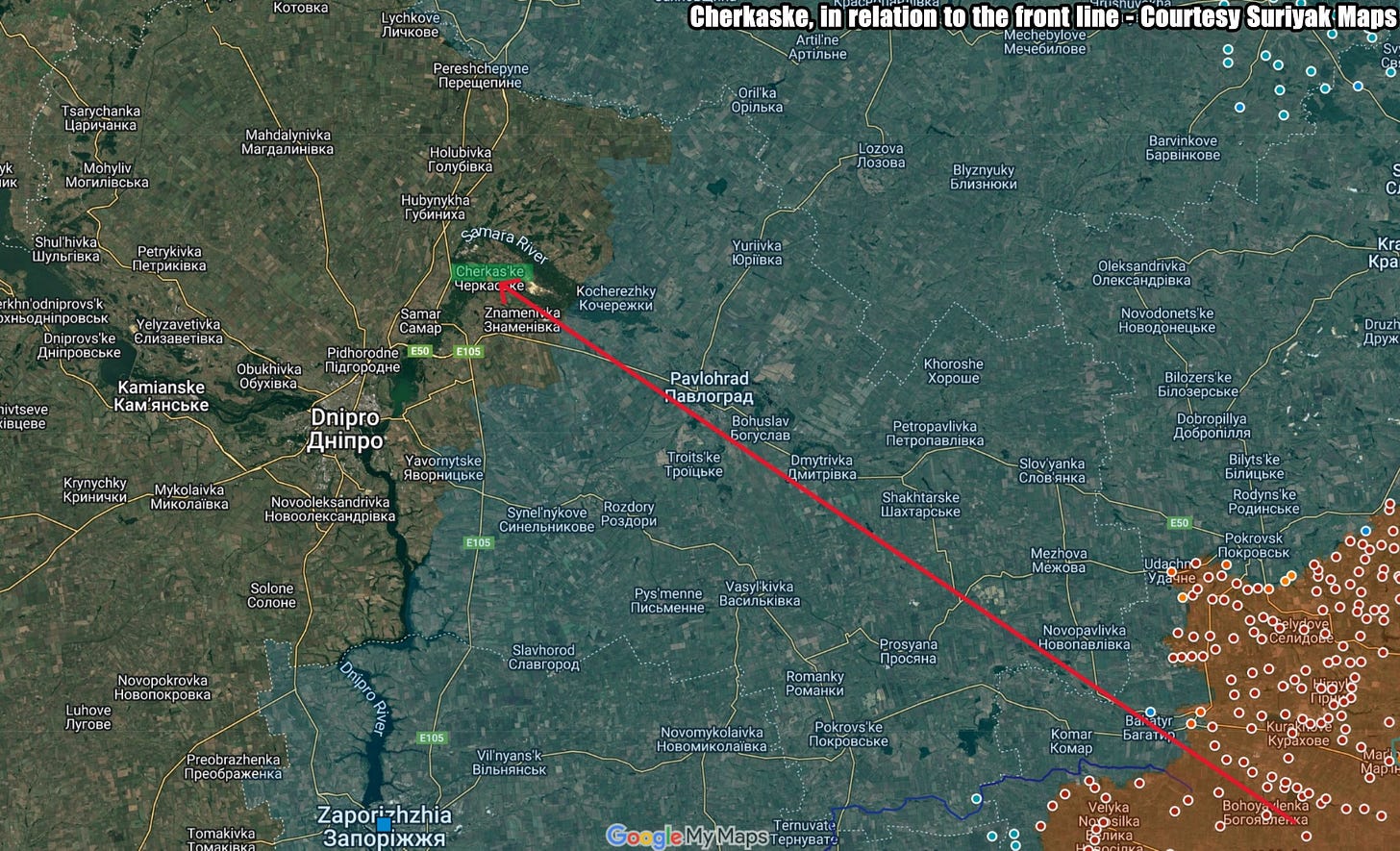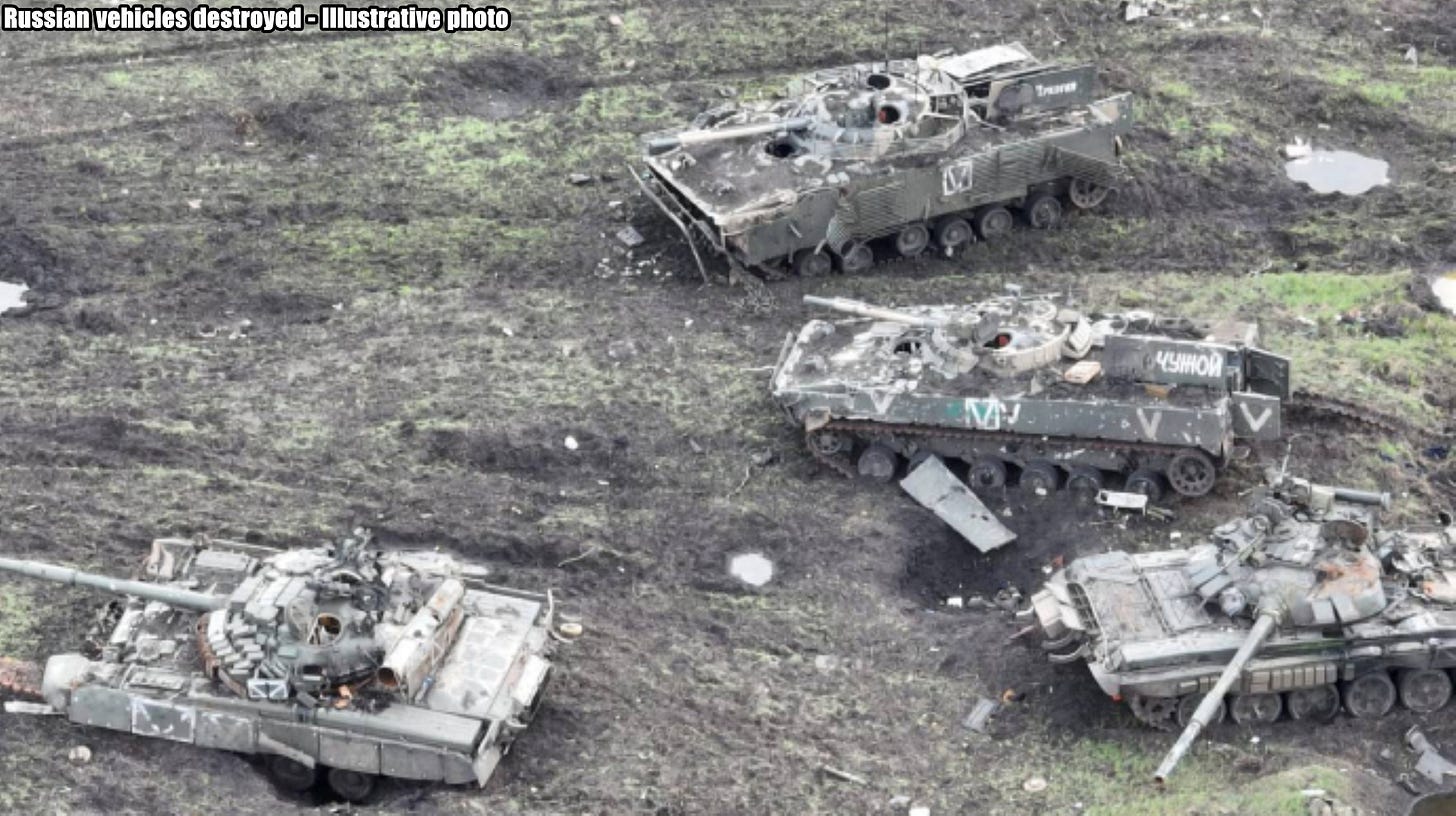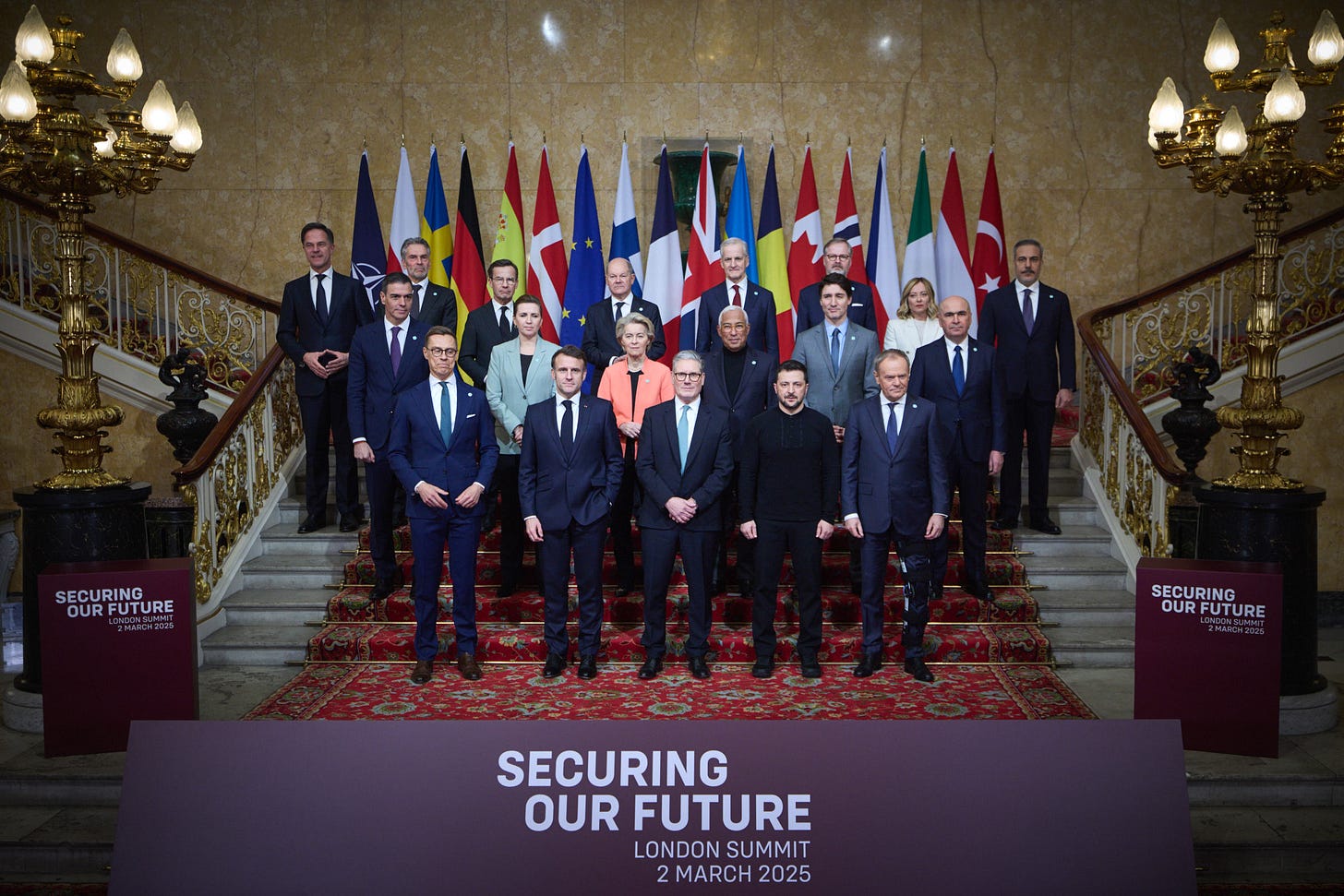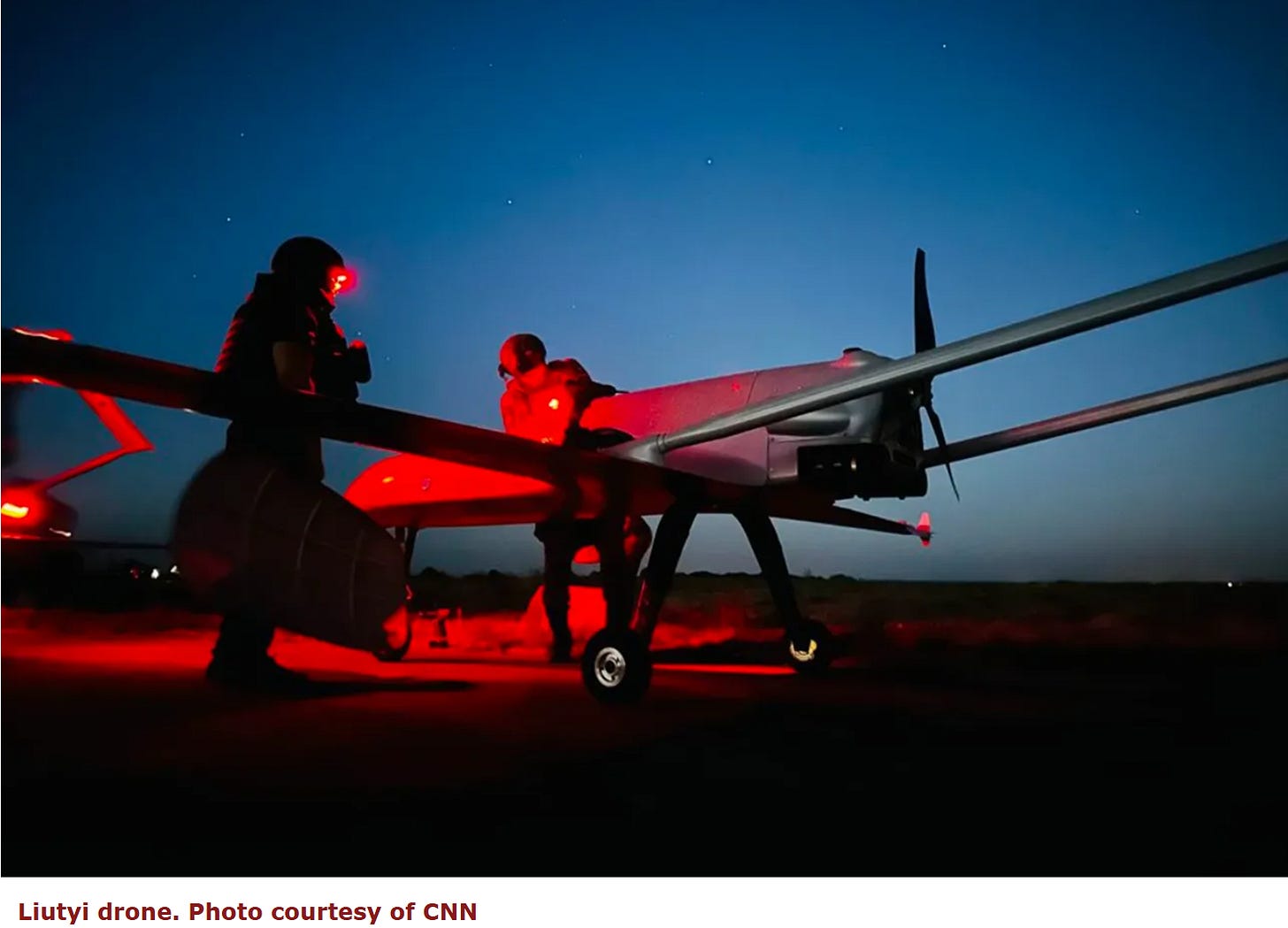Slava Ukraini! In early 2022 I began a Telegram channel aggregating news from a number of sources daily on the war in Ukraine. In June 2023 I began providing a daily draft for the Ukraine War Brief Podcast collecting news from over 70 sources daily, which formed the basis of the script. While the Podcast no longer exists I have continued to make this Brief available for my followers here on Substack for those who wish to keep up with the news from the war.
All the latest news on the Russo-Ukraine War 6 days per week
ALONG THE CONTACT LINE
GSAFU Morning Report
The General Staff of the Armed Forces of Ukraine in its Operational Information update at 08:00 on Mar 03 stated that day 1104 of the full-scale invasion of the Russian Federation against Ukraine had begun.
The situation on the line of combat remains tense in some sectors. Ukrainian defenders continue to actively counteract the Russian aggressor, causing them significant losses in personnel, equipment and technology. Exhausting the enemy along the entire front line and continuing to disrupt the plans of Russian occupiers to advance deeper into the territory of Ukraine.
During the past two days, 206 combat engagements took place.
Over the past 48 hours, the enemy carried out 3 missile strikes, 187 air strikes, used 5,442 drones and fired approximately 10,800 artillery shells across the positions of Ukrainian forces and civilians.
Air Force Daily Report
63 ENEMY UAVS SHOT DOWN, 16 DRONES FAILED TO REACH THEIR TARGETS (LOCATIONALLY LOST)
➖➖➖➖➖➖➖➖➖
On the night of Mar 2, 2025 (from 7:00 p.m. on Mar 1), the enemy attacked with 79 Shahed attack UAVs and simulator drones of various types from the directions: Orel, Bryansk, Millerovo, Primorsko-Akhtarsk - Russia.
The air attack was repelled by anti-aircraft missile troops, electronic warfare units, and mobile fire groups of the Air Force and Defense Forces of Ukraine.
As of 08:30, it was confirmed that 63 Shahed attack UAVs and drones of other types were shot down in Kharkiv, Poltava, Sumy, Kyiv, Cherkasy, Kirovohrad, Zhytomyr, Vinnytsia, Khmelnytskyi, Dnipropetrovsk, Zaporizhia, Kherson and Mykolaiv regions.
16 enemy drone simulators were lost in location (without negative consequences).
As a result of the enemy attack, the Kharkiv, Sumy, Khmelnytskyi, and Zaporizhia regions suffered.
46 ENEMY UAVS SHOT DOWN, 31 SIMULATOR UAVS FAILED TO REACH THEIR TARGETS (LOCATIONALLY LOST)
➖➖➖➖➖➖➖➖➖
On the night of Mar 3, 2025 (from 7:00 p.m. on March 2), the enemy attacked with 83 Shahed attack UAVs and simulator drones of various types from the directions: Orel, Kursk, Millerovo, Primorsko-Akhtarsk - Russia.
The air attack was repelled by anti-aircraft missile troops, electronic warfare units, and mobile fire groups of the Air Force and Defense Forces of Ukraine.
As of 08:30, it was confirmed that 46 Shahed attack UAVs and drones of other types were shot down in Kharkiv, Poltava, Sumy, Kyiv, Chernihiv, Cherkasy and Dnipropetrovsk regions.
31 enemy drone simulators — lost in location (without negative consequences).
As a result of the enemy attack, the Kharkiv, Sumy, Kyiv, Cherkasy, Dnipropetrovsk, and Zaporizhia regions suffered.
Combat Operations in the Kursk Sector, Russian Federation
The Institute for the Study of War (ISW), a US based think tank, in its Mar 2 Russian Offensive Campaign Assessment reported that Russian forces continued offensive operations within the Ukrainian salient in Kursk Oblast on Mar 2 but did not make any confirmed advances.
Russian sources continued to claim on March 2 that Russian forces are operating in northern Sumy Oblast near the international border.
The Khortytsia operational-strategic group
(Responsible for the northeastern part of Ukraine. )
There have been no major changes to the combat environment since our last report.
The Tavria operational-strategic group
(Responsible for the central-eastern and southeastern part of Ukraine.)
Pokrovsk Sector : Ukraine's Khortytsia Group of Forces Spokesperson Major Viktor Trehubov stated that Ukrainian forces recently pushed Russian forces from Pishchane and Kotlyne and that Russian forces are attempting to retake these settlements. Trehubov noted that Russian forces are suffering significant losses in the Pokrovsk direction and that Ukrainian electronic warfare (EW) systems are interfering with Russian glide bomb navigation systems. Trehubov stated that Russian forces are leveraging frozen ground conditions and water features to use more heavy equipment and armored vehicles in the Pokrovsk and Kurakhove directions, but that Russian forces are still struggling to advance in these areas.
A Ukrainian military observer also acknowledged that Ukrainian forces are better integrating drone and artillery systems with ground operations in the Pokrovsk direction and that improved integration is contributing to improved Ukrainian defensive operations in the area.
Velyka Novosilka Sector: Russian forces recently advanced in the Velyka Novosilka direction.
Ukrainian military observer Kostyantyn Mashovets stated on March 2 that elements of the Russian 127th Motorized Rifle Division (5th CAA, Eastern Military District [EMD]) recently seized Burlatske (northwest of Velyka Novosilka)
The Odesa operational-strategic group
(Responsible for Kherson, Qırım, (also known as Crimea) and the Black Sea.)
There have been no major changes to the combat environment since our last report.
TEMPORARILY OCCUPIED TERRITORIES
Nothing major to report.
THE HOME FRONT
Russia plans to launch 500 kamikaze drones per day at Ukraine, HUR says.
Russia plans to launch at least 500 drones per aerial attack against Ukraine, Vadym Skibitskyi, the deputy head of Ukraine's military intelligence agency (HUR), said in an interview with RBC Ukraine published on Mar 3.
Both Ukraine and Russia have heavily invested in drone technology throughout the war, significantly altering modern warfare tactics. Since the beginning of the full-scale invasion, Russia has launched thousands of cheap but effective drones at Ukraine.
Russia currently uses 150 to 200 drones per attack against Ukraine which occur on a daily basis, but Russian forces plan to increase their capabilities to 500, Skibitskyi told RBC Ukraine. Russia also plans to increase the number of sites from which drones will be launched.
Russian forces have significantly increased domestic production of various types of drones, according to Skibitskyi. Russia uses combat and reconnaissance drones, as well as so-called "decoys," which are drones without a payload, he added.
"All of this simply overloads our air defense system. It is very difficult to distinguish between a drone flying with a warhead and one without," Skibitskyi said.
"Earlier, in 2023 and early 2024, we knew only a Shahed (drone), then there were Geran-1, Geran-2, and that was it. Today, the range of these unmanned aerial vehicles is so large that it is not even always possible to count them on one hand," Skibitsky added.
Commander-in-Chief Oleksandr Syrskyi said on Feb. 6. Russia is forming unmanned systems forces and plans to recruit up to 210,000 personnel for the new branch by 2030.
Ukraine, as well as Russia, has continuously expanded its drone capabilities, using aerial, naval, and ground-based systems for reconnaissance, precision strikes, and other operations.
Ukraine's Unmanned Systems Forces announced on Jan. 31 that Ukrainian troops are now employing a long-range drone capable of traveling up to 2,000 kilometers (1,242 miles) while carrying a 250-kilogram air bomb.
Russian attacks across Ukraine kill 6, injure 26 over the past day.
Russian attacks against Ukraine killed six civilians and injured 26 others over the past day, the Kyiv Independent reported citing regional authorities on March 3.
In Kherson Oblast, Russia targeted 25 settlements, including the regional center of Kherson, over the past day. As a result of the attacks, four people were killed, and 10 other people were injured, Governor Oleksandr Prokudin reported.
In Donetsk Oblast, Russian forces killed two civilians and injured another in the city of Pokrovsk. One person was also injured in the town of Kostiantynivka, Governor Vadym Filashkin said.
In Kharkiv Oblast, Russian drones hit a five-story building, injuring eight people, including a 6-year-old child, in the regional center of Kharkiv. As a result of a Russian attack with four glide bombs at the village of Dovzhyk, a woman and a man suffered injuries, according to Governor Oleh Syniehubov.
In Dnipropetrovsk Oblast, Russian forces targeted the town of Nikopol with artillery, injuring an 84-year-old man and two women, aged 44 and 82. The man was rescued from the rubble and hospitalized in a severe condition.
Russia also attacked the city of Kryvyi Rih with drones. A 52-year-old woman was injured, the local military administration reported.
Russia strikes Ukrainian military training ground during exercises.
Russian forces struck a Ukrainian military training ground in Dnipropetrovsk Oblast on March 1 during a formation exercise, the Kyiv Independent reported citing Mykhailo Drapatyi, Commander of the Ground Forces of Ukraine, on Mar 3.
A day earlier, reports of a Russian attack with an Iskander-M ballistic missile on a training ground in the village of Cherkaske near the regional center of Dnipro began circulated on social media. The strike was allegedly carried out after an Orlan drone spotted a formation of soldiers about 100 kilometers (62 miles) from the front line.
Drapatyi did not disclose the number of Ukrainian soldiers killed and injured. He added that the truth about the attack could be hidden "in the fog of bureaucracy" but promised to prevent this.
"A tragedy at a training ground is a terrible consequence of an enemy strike. The war requires quick decisions, responsibility, and new safety standards; otherwise, we will lose more than we have," Drapatyi said.
Drapatyi added he had launched an investigation into the circumstances of the strike and appointed an independent review with the participation of military counterintelligence.
"Everyone who made decisions that day, and everyone who did not make them on time, will be held accountable. No one will hide behind explanations or formal reports," he said.
Later on March 3, Commander-in-Chief Oleksandr Syrskyi said the head of the unit training center that was hit and the commander of the military unit had been suspended from duty.
"In the middle of the day, on Mar 1, the enemy attacked one of the military units on the territory of the Land Forces of the Armed Forces of Ukraine training ground in the Dnipropetrovsk region," he said.
"As a result of the hit of the Iskander-M ballistic missile equipped with cluster munitions, there are dead and wounded," he added.
Also on Mar 3, Ukraine's State Bureau of Investigation announced it was opening criminal proceedings into the "death and injury of Ukrainian servicemen as a result of a Russian missile strike on a training ground in the Dnipropetrovsk region."
RUSSIAN WORLD
Russian Army’s Use of Donkeys in Ukraine Underscores a Staggering Equipment Shortage
Russian soldiers appear to be using horses and donkeys to transport supplies to and from the front lines in Ukraine as high losses and insufficient production have created acute equipment shortages, the Moscow Times reports.
Meanwhile, the Russian army has resorted to using civilian vehicles for attacks on Ukrainian positions, reducing combat effectiveness, increasing casualties and slowing their advance.
While these diplomatic efforts to end the war continue, there are questions about the state of the Russian military and its ability to recover from losses after three years of intense fighting — especially after pro-Russian Telegram channels circulated photos of donkeys being used at the front lines this month.
Pro-war blogger Kirill Fedorov claimed that the Defense Ministry had sent a donkey to his unit due to a shortage of vehicles. More evidence of Russian soldiers using donkeys, horses and even camels to transport supplies emerged soon after.
Lieutenant General Viktor Sobolev, a member of the Russian State Duma’s Defense Committee, said the army’s use of pack animals was a “normal” practice.
Since the beginning of the war, Russian troops have relied on civilian vehicles for logistical support, often purchasing them with their own money or through volunteer fundraising. These vehicles are used for transportation in the rear, delivering supplies and troop reinforcements.
However, in recent months, there have been increasing cases of Russian soldiers launching assaults on Ukrainian positions in ordinary civilian cars.
One video captured by a Ukrainian drone shows a column of civilian vehicles being struck by mortars and FPV drones, resulting in heavy losses. And this is far from the only case. The Russian military has even started using scooters for transportation on the front line.
Other videos depict Russian troops attempting attacks on motorcycles, which also result in significant casualties.
According to the OSINT project Oryx, Russia has lost over 15,000 pieces of military hardware since launching its full-scale invasion in February 2022, including more than 3,700 tanks and roughly 8,000 armored vehicles. The number of destroyed civilian vehicles is even higher.
Military analyst Yan Matveev noted that combat vehicles primarily serve as troop transporters. Infantry fighting vehicles (IFVs) and armored personnel carriers (APCs) are designed to move soldiers across “no man's land” to enemy positions or evacuate them, providing some level of protection.
However, Russia’s IFVs have proven inadequate in Ukraine and the country lacks mine-resistant ambush-protected (MRAP) vehicles, which the U.S. supplies to Ukraine.
The increasing dominance of drones on the battlefield has made attacks even more perilous. Recently, Ukrainian forces decimated an armored column from Russia’s elite 155th brigade as it attempted to advance across open terrain in the Kursk region.
Analysts say that repeated costly assaults have severely depleted Russia’s vehicle reserves.
“The critical shortage of transportation in the Russian army has completely deprived it of the ability to conduct strategic offensive operations,” Matveev said.
Even local battlefield breakthroughs have become difficult to exploit, he said, as Russian forces struggle to transfer reinforcements or resupply advancing troops. This has resulted in a slow, grinding style of warfare.
Due to equipment shortages, Russian units have begun using civilian vehicles, including cars and minibuses, to transport personnel and supplies. Both Russian and Ukrainian forces employ such vehicles, but they lack the necessary armor, making them highly vulnerable to drone attacks as both sides actively target each other’s logistics.
Videos filmed by Russian soldiers show frontline roads littered with burned-out civilian and military vehicles. As a result, the Russian army has occasionally resorted to using pack animals for transporting ammunition and other supplies.
Military expert Pavel Luzin noted that other countries’ militaries use pack animals in difficult terrain like deserts or mountains.
“In the steppes of Ukraine, where there is an extensive road network, the use of animals is purely due to a lack of transportation,” he told The Moscow Times.
In some places, the situation is even more dire. On the battlefield near Pokrovsk, a key Donetsk region stronghold for Kyiv, Russian troops must march 18 kilometers (11 miles) on foot due to vehicle losses, Russian military blogger Svyatoslav Golikov reported. Supplies, reinforcements and ammunition deliveries have slowed dramatically.
The loss of armored vehicles and worsening logistics have already affected the pace of Russian advances. Data from the Ukrainian OSINT project Deep State shows that in early February, the Russian army captured the smallest amount of Ukrainian territory since June 2024, according to an analysis by the outlet Agentsvo.
Since the start of the war, Russia has been able to make up for its heavy vehicle losses by pulling old Soviet-era vehicles from storage and restoring them — but these reserves are now depleted. Satellite imagery of Russian military storage bases indicates that stocks of armored vehicles have declined by nearly 32% since 2021, according to OSINT analysts cited by Newsweek.
The number of MT-LB armored personnel carriers has fallen from 2,527 before the war to just 922 in May 2024. Meanwhile, Soviet-era BTR-60, BTR-70 and BTR-80 armored personnel carriers have been completely removed from storage.
Military expert Richard Vereker has observed a sharp decline in Russian tank and APC losses, which he attributes to the dwindling number of these vehicles in the field.
However, he notes an increase in losses of newer models such as the BTR-82, suggesting that Russia’s defense industry is struggling to restore older Soviet vehicles while ramping up production of more modern alternatives.
Ukrainian military expert Alexander Kovalenko said even these newer models share the same fundamental weakness as their Soviet predecessors: poor armor protection.
According to Forbes, Russia produces approximately 200 new BMP-3 IFVs and 90 new T-90M tanks per year, along with several hundred other armored vehicles, including BTR-82 APCs. However, this is far from enough to replace vehicles destroyed on the battlefield.
While Russia may not be able to rebuild its military fully for years, that does not mean it will abandon its long-term ambitions.
“Russia has not abandoned its goals — to destroy Ukraine, undermine NATO and challenge U.S. leadership. This is an ideological motivation that does not have to take material factors into account,” Luzin said.
INTERNATIONAL NEWS
Ukraine's partners gather for key London summit after White House fallout.
Zelenskyy – 'Once in a generation moment'
Ukraine's President Volodymyr Zelenskyy, French President Emmanuel Macron, Italian Prime Minister Giorgia Meloni, Polish Prime Minister Donald Tusk, and other top Western officials gathered on Mar 2 for a London summit to discuss support for Kyiv, the Kyiv Independent reports.
They are among the leaders and senior representatives of 15 countries invited to the U.K. by British Prime Minister Keir Starmer to discuss a path toward a just and lasting peace in Ukraine in the face of Russian aggression.
Zelenskyy landed in London already on Mar 1 following his trip to the U.S. Ukraine's leader left Washington without signing the much-anticipated natural resources deal after a public spat with U.S. President Donald Trump, prompting shock and concerns about the future of U.S.-Ukraine ties.
NATO Secretary General Mark Rutte, European Commission President Ursula von der Leyen, European Council President Antonio Costa, and leaders or senior representatives of Germany, Canada, Czechia, Spain, Denmark, Norway, Finland, Sweden, the Netherlands, Romania, and Turkey have also arrived for the crucial summit.
"On my way to London to highlight Europe’s ongoing support to Ukraine that can lead to just and lasting peace in Ukraine," von der Leyen said on X ahead of her trip.
"The path to peace is strength. Weakness breeds more war. We will support Ukraine while undertaking a surge in European defense."
The Baltic countries, which have been among Ukraine's staunchest supporters throughout the full-scale invasion, were not among the invitees, reportedly leading to Starmer issuing an apology.
"We gather here today because this is a once-in-a-generation moment for the security of Europe and we all need to step up," Starmer said as the summit kicked off, according to Sky News.
The summit is seen as a last-ditch effort to revive Western unity after seismic foreign policy shifts in Washington under the Trump administration.
Both Starmer and Macron visited the U.S. earlier this week to convince Trump to continue playing a role in Ukraine's post-war stability, but their diplomatic efforts were overshadowed by the unprecedented and televised quarrel in the White House on Feb. 28.
The humiliating treatment Zelenskyy received from the U.S. president and Vice President JD Vance prompted Europe's leaders to speak out in support of the Ukrainian president. At the same time, a number of top Western officials have appealed to Zelenskyy to mend ties with Trump to ensure continued U.S. engagement.
Speaking ahead of the summit, the British prime minister revealed that the U.K., France, and Ukraine will spearhead efforts to create a joint ceasefire plan to present to Trump.
The London meeting is also a chance for Ukraine's EU allies to coordinate strategy ahead of the European summit on Mar 6, which is under threat of being derailed by Moscow-friendly Hungary and Slovakia.
MILITARY & TECH
The failure of the Russian air force to establish air superiority
The UK Ministry of Defence in their Mar 1 Intelligence Update on Ukraine stated that after 3 years of conflict, Russia's Aerospace Forces, despite a technological and numerical advantage have failed to gain air superiority over Ukraine. They have resorted to using tactical-level aviation, such as SU-34 aircraft, as airborne artillery.
Russia's consistent use of One Way Attack Uncrewed Aerial Systems (OWA UAS) has allowed Russia the space and time to recuperate its Long Range Aviation fleet and associated Air Launched Cruise Missile and Air Launched Ballistic Missile stocks. While Russia retains the ability to use these assets, the ultimate effect is that the air defence picture for Ukraine is increasingly busy, complex and challenging. With this combination of systems the Russians have consistently targeted Ukrainian critical national infrastructure and air bases.
Ukraine has successfully used UAS against military targets and infrastructure in Russia with increased regularity, including multiple recent strikes on Russian oil refineries. In Sep. 2024 Ukraine also struck four Russian strategic ammunition depots, including Toropets (see imagery) hundreds of kilometres from Ukraine. The total tonnage of ammunition destroyed represents the largest loss of Russian and North Korean supplied ammunition during the war.
Such Ukrainian successes highlight Russia's continued inability to protect strategic military sites from attack, as well as indicating the challenge confronting Russia to protect its infrastructure balanced against protecting its frontline operations.
EU to help Ukraine replace Musk’s Starlink
The European Commission is figuring out how it could help Ukraine secure satellite communication capacity in the wake of Elon Musk reportedly threatening to pull Kyiv's access to his Starlink network, Politico reports.
Space-based communication systems are a critical tool for Ukraine, but it remains unclear whether Musk will continue to offer Starlink as the war grinds on.
Ukraine said last year it has about 42,000 Starlink terminals in operation in the country; about half are financed by Poland.
Commission spokesperson Thomas Regnier said Kyiv had already "expressed interest" in how it could use Govsatcom — a pooled network of the EU's existing national government satellite capacity — and IRIS², a new constellation only set to be operational in the 2030s.
"The Commission will pursue its contacts with Ukraine in that regard," said Regnier.
Earlier this week, French Renew MEP Christophe Grudler told the EU executive in a letter that it should urgently “assess all possible alternative satellite solutions that the EU could offer Ukraine” instead of Starlink.
Grudler said expediting the deployment of Govsatcom this year by skipping the certification process could work as a stopgap solution while IRIS² is being developed. Regnier said the system offer Kyiv "precursor governmental services" without specifying what that would be in practice, or how soon it could be operational.
Other options would be sourcing commercial capacity from Eutelsat, Hispasat or SES satellites already in geostationary orbit or with the OneWeb constellation.
That’s it for today’s Brief folks if you would like to keep up with events in Ukraine daily please consider subscribing, it’s free!


